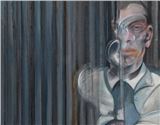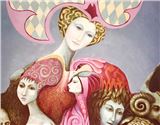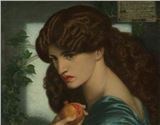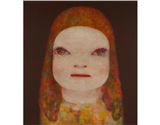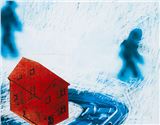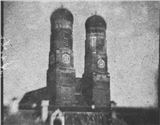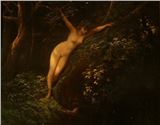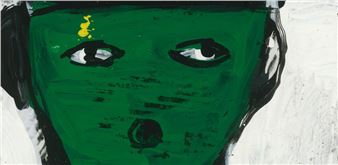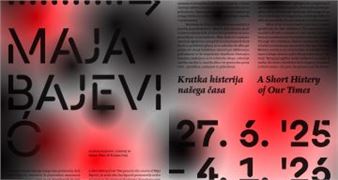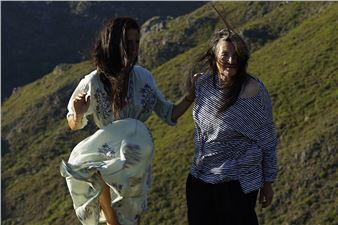Art at Work: At the Crossroads Between Utopianism and (In)Dependence
The Art at Work exhibition looks at three different segments of the genealogy of the concept of (artistic) work in the region of the former Yugoslavia: first, the way work was conceived by the avant-garde artists of the 1960s, 1970s, and 1980s; next, the transformations of the concept of artistic work and art spaces in the 1990s; and lastly, the labor-related political art practices since 2000.
The early 1990s ÔÇô the time of transition from socialism to capitalism in the territory of the former Yugoslavia ÔÇô saw some fundamental shifts in the way artistsÔÇÖ work was perceived, as well as structural changes of spaces of art. And more than that: in the post-socialist world, artistsÔÇÖ production time changed as well. While under socialism artists had viewed indolence and the time of ÔÇ£running on idleÔÇØ as creative time, in capitalism this was replaced by a time dictated by deadlines. Furthermore, the former utopianism of art collectives was replaced by the newly-founded NGOsÔÇÖ pragmatism and flexibility of work, due to their predominant dependence on public funds in the 1990s. Artists became producers, and both artists and other cultural workers came to depend on projects for their survival, thus joining the ever-growing ranks of precarious workers. While working conditions for artists can hardly be said to have been much better under socialism, at least artists were masters of their own time. As the precariousness of (artistsÔÇÖ) work is only intensifying with the globally deteriorating conditions (the pandemic, right-wing policies, wars, the economic crisis), the need for building more intense horizontal connections and rethinking the legacy of the avant-gardes is ever more urgent. Another fact underscored by Art at Work is that art collectives used to be predominantly male; women organized and articulated their work in other ways. The projects produced over the past twenty years that are included in the exhibition address the concept of work in the manner of political associations, thus directly influencing cultural politics in their respective states. This exhibition chapter relates also to the local traditions of collaboration between art institutions, NGOs, and individual artists in terms of labor, thematically extended to encompass the struggle for (cultural) workersÔÇÖ rights, including the rights of domestic workers, care workers, and migrant workers.

Recommended for you
The Art at Work exhibition looks at three different segments of the genealogy of the concept of (artistic) work in the region of the former Yugoslavia: first, the way work was conceived by the avant-garde artists of the 1960s, 1970s, and 1980s; next, the transformations of the concept of artistic work and art spaces in the 1990s; and lastly, the labor-related political art practices since 2000.
The early 1990s ÔÇô the time of transition from socialism to capitalism in the territory of the former Yugoslavia ÔÇô saw some fundamental shifts in the way artistsÔÇÖ work was perceived, as well as structural changes of spaces of art. And more than that: in the post-socialist world, artistsÔÇÖ production time changed as well. While under socialism artists had viewed indolence and the time of ÔÇ£running on idleÔÇØ as creative time, in capitalism this was replaced by a time dictated by deadlines. Furthermore, the former utopianism of art collectives was replaced by the newly-founded NGOsÔÇÖ pragmatism and flexibility of work, due to their predominant dependence on public funds in the 1990s. Artists became producers, and both artists and other cultural workers came to depend on projects for their survival, thus joining the ever-growing ranks of precarious workers. While working conditions for artists can hardly be said to have been much better under socialism, at least artists were masters of their own time. As the precariousness of (artistsÔÇÖ) work is only intensifying with the globally deteriorating conditions (the pandemic, right-wing policies, wars, the economic crisis), the need for building more intense horizontal connections and rethinking the legacy of the avant-gardes is ever more urgent. Another fact underscored by Art at Work is that art collectives used to be predominantly male; women organized and articulated their work in other ways. The projects produced over the past twenty years that are included in the exhibition address the concept of work in the manner of political associations, thus directly influencing cultural politics in their respective states. This exhibition chapter relates also to the local traditions of collaboration between art institutions, NGOs, and individual artists in terms of labor, thematically extended to encompass the struggle for (cultural) workersÔÇÖ rights, including the rights of domestic workers, care workers, and migrant workers.
Artists on show
- Andreja Kulun─ìi─ç
- Biljana Tanurovska-Kjulavkovski
- Bozena Koncic Badurina
- Damir Avdi─ç
- Danica Daki─ç
- Darinka Pop - Miti─ç
- Doruntina Kastrati
- Dragoljub Todosijevi─ç
- Duga Mavrinac
- Filip Jovanovski
- Goran ─Éor─æevi─ç
- Goran Trbuljak
- György Galántai
- Hristina Ivanoska
- Igor Grubic
- Irena Lagator
- IRWIN
- Ivana Vaseva
- Jelena Miji─ç
- Joze Barši
- KURS
- Lenka ─Éorojevi─ç
- Marika Poga─ìnik
- Marko Brecelj
- Marko Poga─ìnik
- Matej Stupica
- Milijana Babi─ç
- Mladen Stilinovi─ç
- Nebojša Milikić
- Nebojsa Seric Soba
- Nika Autor
- NSK
- Rena Rädle
- Sanela Jahi─ç
- Šejma Fere
- Sinisa Labrovic
- Slaven Tolj
- Tomislav Gotovac
- Uroš Potočnik
- Vladan Jeremi─ç
- Walter De Maria
- Zoran Popovic
Contact details


 ARTISTS
ARTISTS
